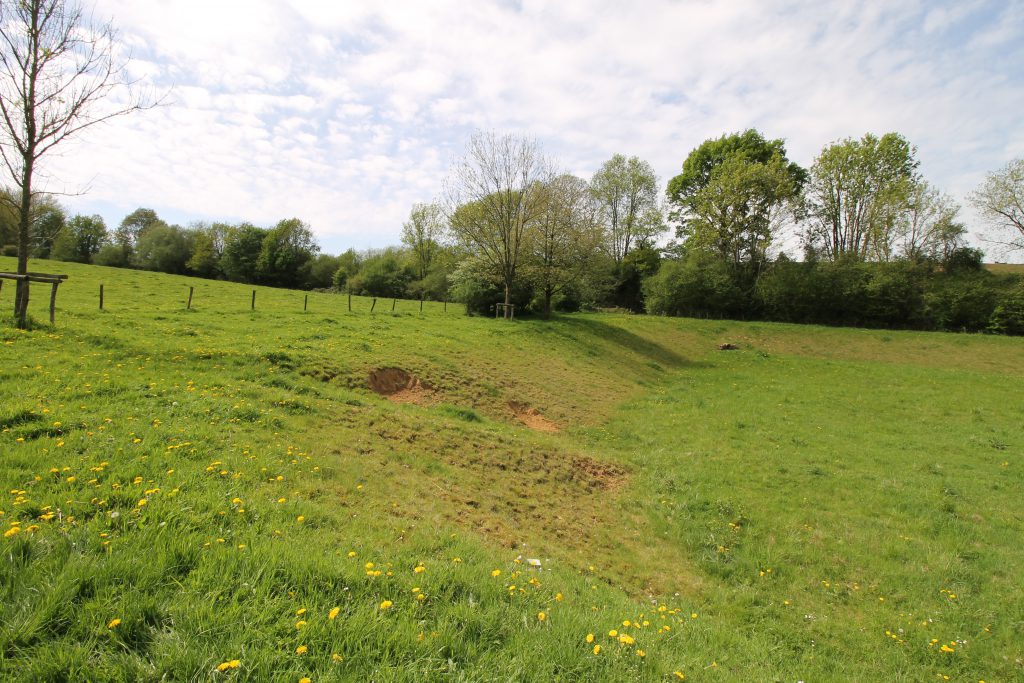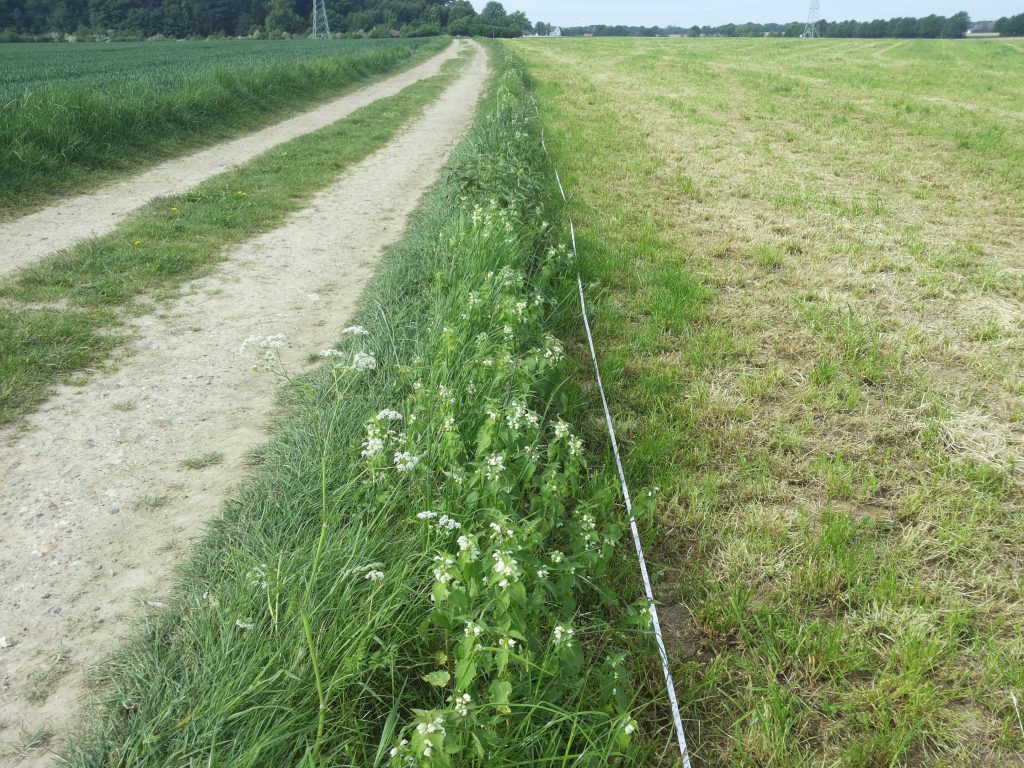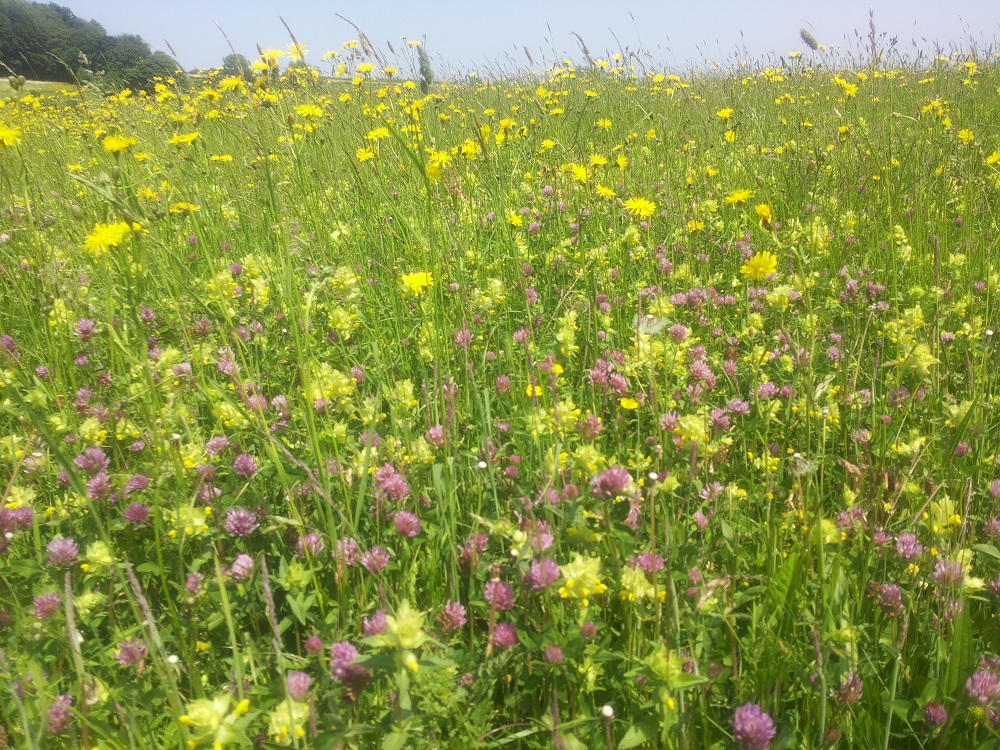What we do
Within the Boshommellandschap Geuldal we focus on 5 habitat types: road side verges, water retention sites, seasonally grazed moderately productive pastures, field margins and hedgerows. In 2018 and 2019 we measured the habitat quality (flower abundance) and bee diversity at 20 locations in each habitat, and added 10 locations in species rich chalk grassland as a reference situation. In 10 of the locations in each habitat adjusted management was implemented in 2020, to be able to measure the effects of the management. Read more about the adjusted management below.

Road side verges
Road side verges are essential corridors between different habitats. To optimise management in these verges the councils of Gulpen-Wittem and Valkenburg are adjusting the mowing regime in these verges. In the adjusted management verges are mown in phases (once or twice a year and not all at the same time), to spread out flower availability over the year.
Water retention sites
Rainwater retention sites in the Geuldal are managed by the water board Waterschap Limburg. Bare soil patches, especially on the sloping levees can be very suitable nesting locations for wild bees. These habitats are often grazed in summer, creating new bare patches but also reducing the flower cover. In the adjusted management grazing will therefore start later in the season.


Moderately productive pastures
In these moderately productive pastures, managed by the nature organisations Staatsbosbeheer and Natuurmonumenten, management has changed from year-round grazing to either rotational grazing or management by hay making. This change in management gives more opportunity for the vegetation to flower and keeps the openness of these grasslands intact.
Field margins
Similarly to road side verges, field margins can act as corridors between habitats. In the adjusted management field margins will be sown with a wildflower mix, consisting of red clover, chicory and knapweed. The farmers collective Natuurrijk Limburg has set up contracts with their members to install these margins.


Hedgerows
In the Geuldal hedgerows occur along roads and as field boundaries. Traditionally they are pruned every year, whereas flowers occuring on the second years’ wood could be a good food source for bees. In the adjusted management flowering of hedgerows is stimulated by delaying the pruning of the hedges and installing new thicket hedges.
Species rich grassland (reference)
This habitat type is used as a reference of what could be possible in the area. Of course every habitat has their specific conditions including nesting and foraging spaces for bees. Species rich grasslands contain a large amount of flowers throughout the season, including rare orchids, and are often managed as hay meadows.
